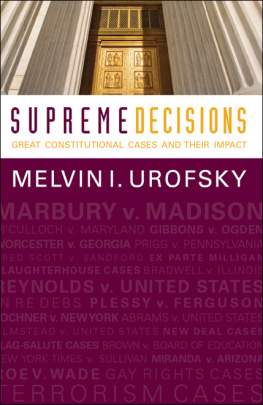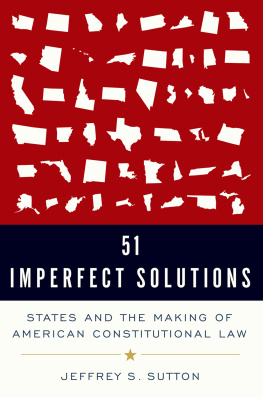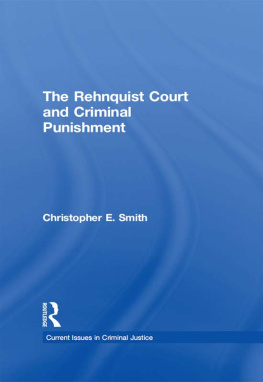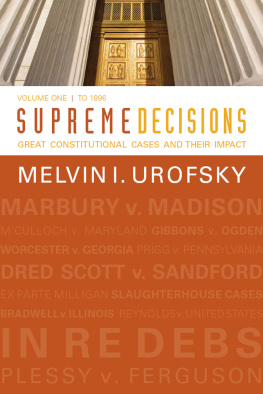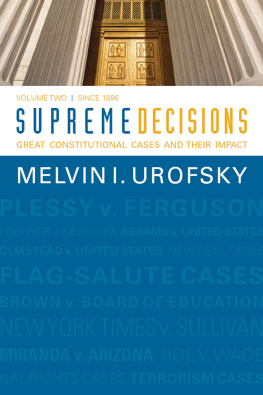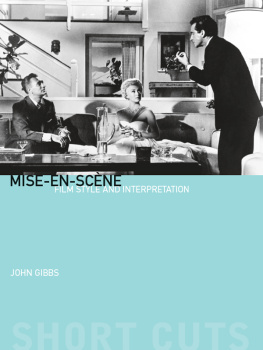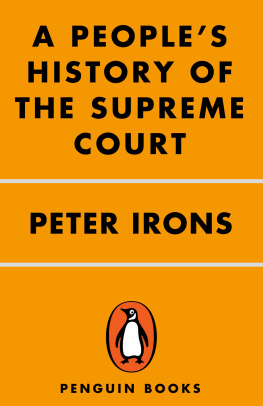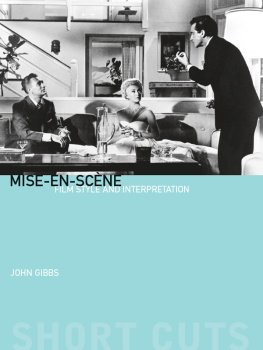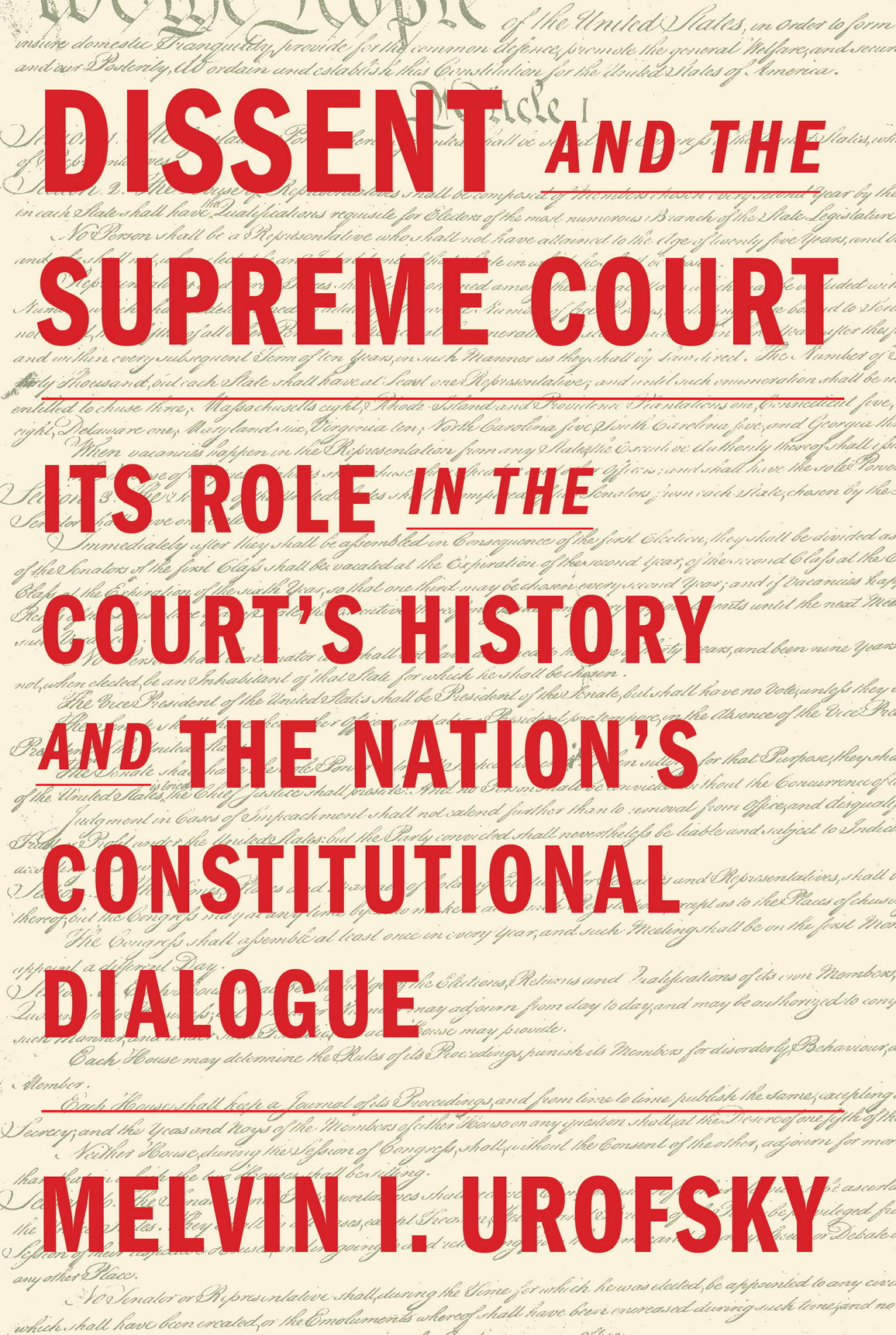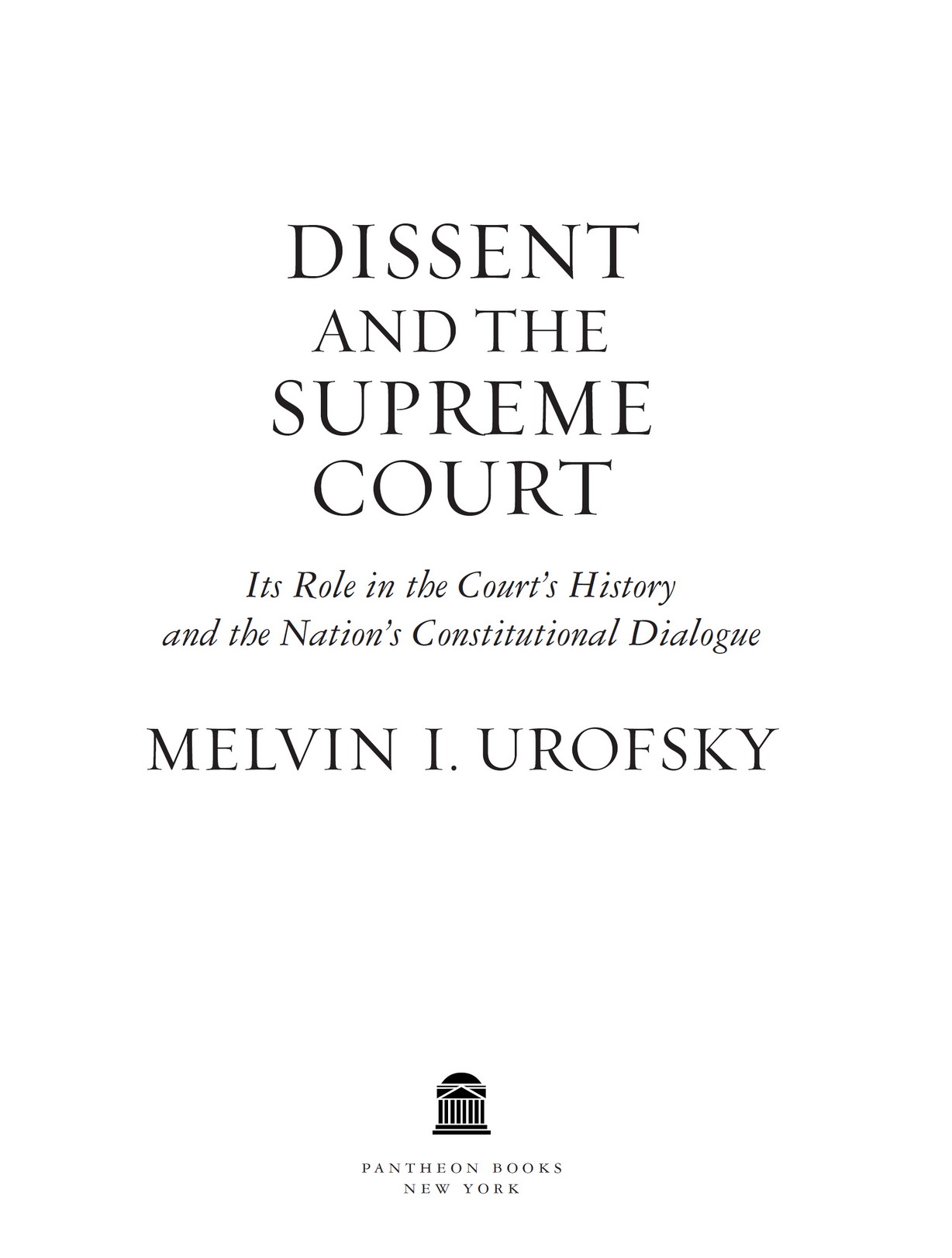ALSO BY MELVIN I. UROFSKY
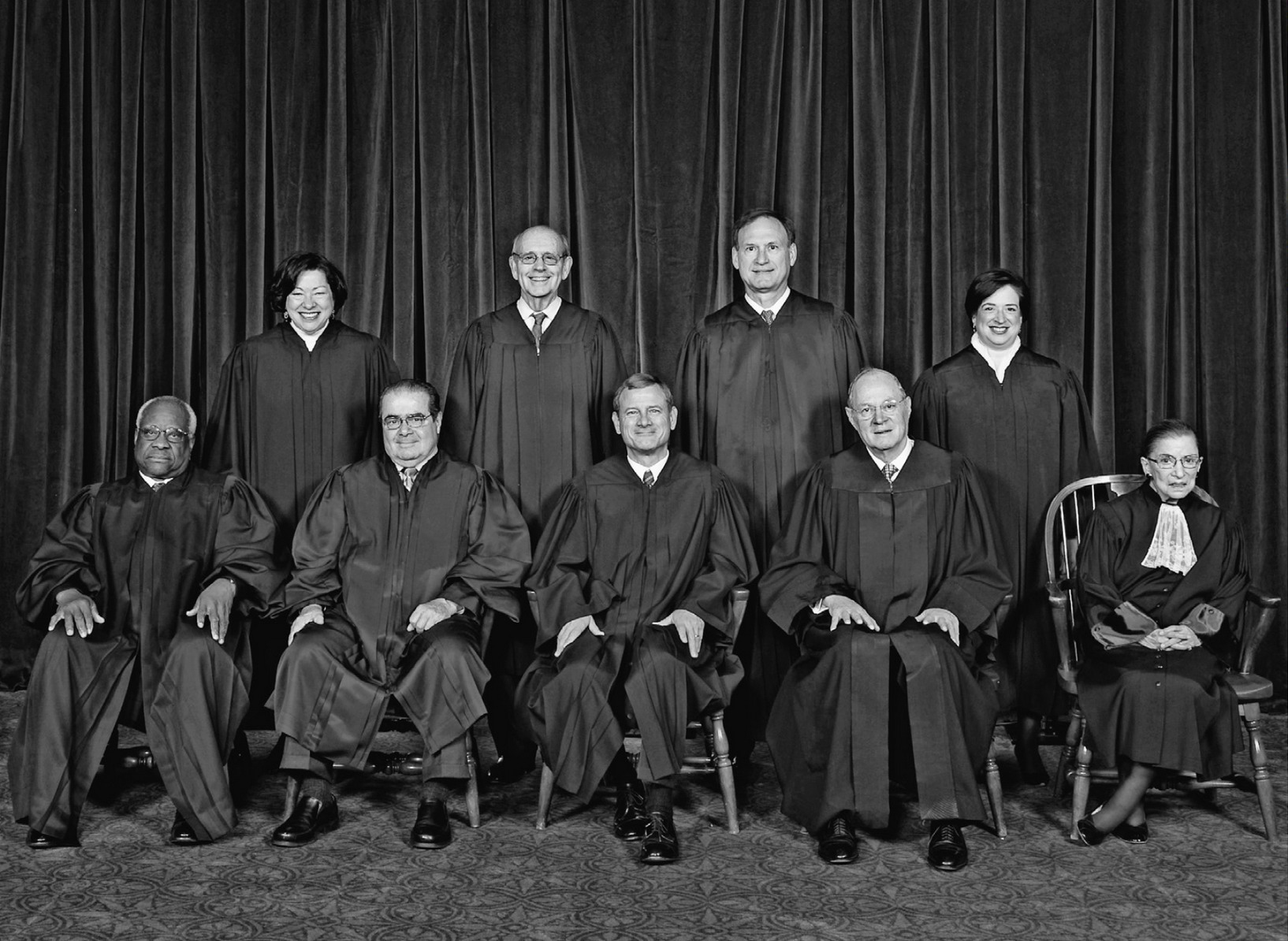

STEVE PETTEWAY, COLLECTION OF USSC
U.S. Supreme Court, 2014.
SEATED FROM LEFT , Clarence Thomas, Antonin Scalia, Chief Justice John Roberts, Anthony Kennedy, and Ruth Bader Ginsburg; STANDING , Sonia Sotomayor, Stephen Breyer, Samuel Alito, and Elena Kagan
Copyright 2015 by Melvin I. Urofsky
All rights reserved. Published in the United States by Pantheon Books, a division of Penguin Random House LLC, New York, and distributed in Canada by Random House of Canada, a division of Penguin Random House Ltd., Toronto.
Pantheon Books and colophon are registered trademarks of Penguin Random House LLC.
Library of Congress Cataloging-in-Publication Data
Urofsky, Melvin I.
Dissent and the Supreme Court / Melvin I. Urofsky.
pages cm
Includes index.
ISBN 978-0-307-37940-5 (hardcover). ISBN 978-1-101-87063-1 (eBook).
1. Dissenting opinionsUnited States. 2. DissentersLegal status, laws, etc. United States. 3. Judicial opinionUnited States. 4. Supreme CourtUnited States. 5. Constitutional lawUnited States. 6. Government, Resistance toUnited States. I. Title.
KF 8748. U 76 2015 342.73029 DC 23 2014048245
eBook ISBN9781101870631
www.pantheonbooks.com
Cover image: United States Constitution. Courtesy National Archives.
Cover design by Oliver Munday
v4.1
a
For my grandchildren,
Emma, Chloe, and Beck,
in the hope they will always hear the dissenting voice
CONTENTS
INTRODUCTION
In addition, the time may come when the minority opinion becomes the majority opinion. According to Rabbi Yehuda, An individual opinion is cited along with the majority opinion as it may be needed at some time in the future.
TALMUD, MISHNA EDUYOT 1.5
W hen John G. Roberts Jr. testified before the Senate Judiciary Committee at his confirmation hearings in 2005, he indicated that he hoped the Court would return to its older practice of speaking with one voiceunanimous opinions founded on narrow grounds. Nearly everyone familiar with the Court and its historyscholars and practitioners alikesurely smiled at Robertss seeming navet, and his dream evaporated almost as soon as he took the oath as chief justice. While there have been a few terms in which the Court spoke in one voice almost half the time, there have been others when the nonunanimous rate has exceeded 70 percent.
The role of dissent is a long and honored one not only in the history of the Court but in that of the United States as well. Many of the early settlers were either religious or political dissenters, and the colonies soon filled with immigrants holding a wide diversity of views on almost everything. The American Revolution came about because of popular dissension from the policies of His Majestys Government, and once the colonies had achieved independence, they fell to squabbling among themselves. The Constitution imposed an order on the country that has worked remarkably well for more than 225 years, yet the Framers never intended to quash dissenting views. The First Amendment to the Constitution holds that Congress shall make no law respecting an establishment of religion, or prohibiting the free exercise thereof; or abridging the freedom of speech, or of the press; or the right of the people peaceably to assemble, and to petition the Government for a redress of grievances. And the Framers included a process to amend the document when necessary.
The English statesman William Gladstone described the American Constitution as the most wonderful work ever struck off at a given time by the brain and purpose of man. The Framersthose demigods, as Thomas Jefferson hailed themintended their work to serve the needs not only of a small nation of thirteen states clinging to the Atlantic Seaboard but of whatever that country might become. While there are some very specific clausesmembers of the House of Representatives must be twenty-five years old, the term of a senator is six yearsthe great enabling clauses are far more general. What exactly do the following mean?
Congress shall have the power to lay and collect taxes, or to regulate interstate and foreign commerce, or
the executive power shall be vested in a president, or the judicial power in one supreme court, and such other courts as Congress shall establish, or
no state shall deny its citizens due process of law or equal protection of the laws or impose cruel and unusual punishment.
Contrary to the arguments of the so-called originalists that the meaning of the Constitution is and always will be the same, the historical evidence is clear that the Framers envisioned the meaning of certain phrases to change as the country grew and evolved, or, as James Madison put it, the meaning of the constitutional text should be liquidated and ascertained over time in the light of the emerging needs of a changing nation. Madison and Alexander Hamilton might not have used the phrase living Constitution, but their essays in The Federalist show that they never intended the document to be static and frozen in the year 1787.
Ever since John Marshall handed down the Courts opinion in Marbury v. Madison (1803), it has been emphatically the province and duty of the judicial department to say what the law is. Or, as another chief justice said over a century later, the Constitution is what the Supreme Court says it is.
Because the powers of the Supreme Courtand indeed of the government itselfwere still plastic in those days, Marshall sought to have the Court speak in one, authoritative voice and abandoned the English practice of all the judges delivering individual opinions seriatim. This did not sit well with some people, but it did help to build up the type of national government that the Framers had envisioned. Even in Marshalls day, however, there were dissents from the opinion of the Court. Nearly all of them are forgotten today, because they had no lasting jurisprudential value, they did not convince future courts, and, to use the terminology of this book, they did not contribute to the constitutional dialogue.


